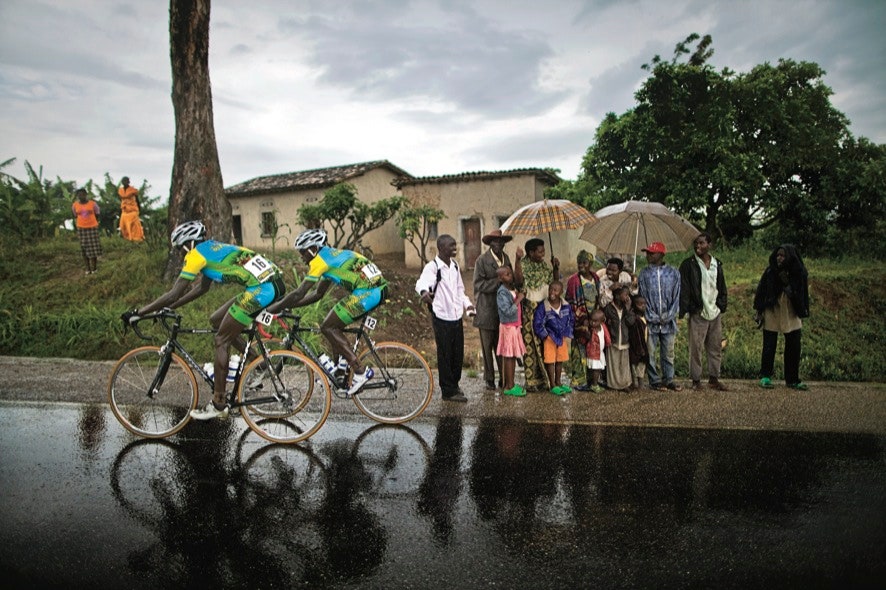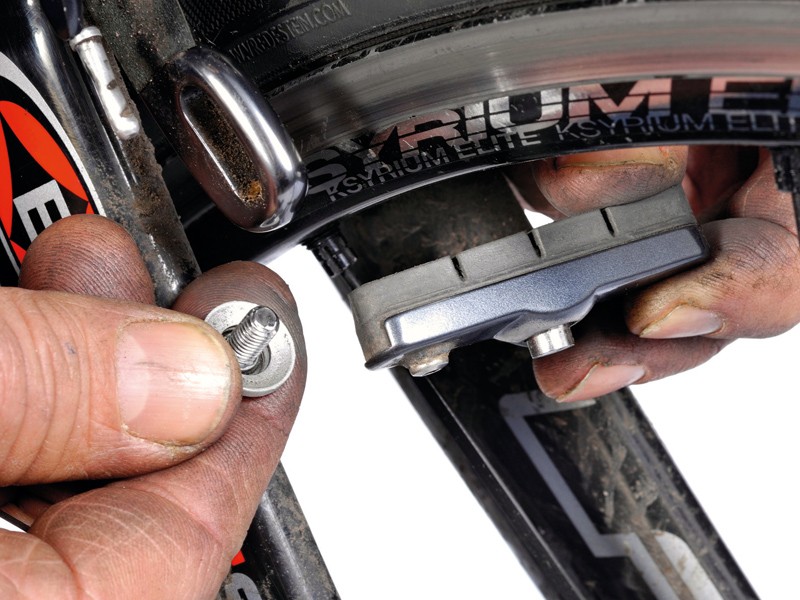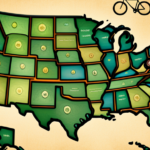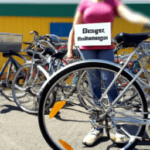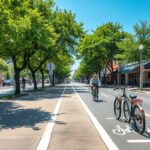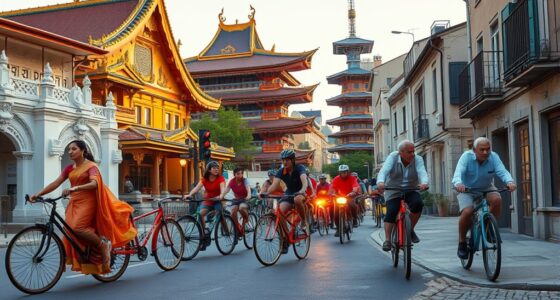
Can competitive cyclists contribute to bicycle advocacy? Numerous advocates for cycling express concerns regarding safety, education, and regulation. It’s at this junction that these two realms intersect. Competitive cyclists have the potential to be powerful proponents of bicycle advocacy as well as significant contributors to the cycling community. Even with the challenges in realizing the intended outcomes, a multitude of cyclists remain dedicated to enhancing the world of cycling.
Cycling advocates are concerned about safety
Safety is a concern for cyclists, especially in urban areas. Statistics from Statistics Canada show that 1.3 percent of Canadians cycle to work, a level that has remained essentially unchanged since 2006. That works out to 201,785 cyclists per 15 million people who commute. But cycling advocates don’t lose heart. They continue to push for more bike paths and safety campaigns to make cycling safer. They are also considering helmets for bike-sharing cyclists.
Recent tragedies have led cycling advocates to focus on safety. Three bike crashes occurred in the Bronx last April, two of which resulted in cyclist deaths. These tragedies are preventable, and cycling advocates are concerned. Several accidents, involving pedestrians or bicyclists, are attributed to distraction while walking, driving or bicycling.
Many cities have adopted bike lanes or bike paths due to safety concerns. These improvements will make it easier for pedestrians and cyclists to travel together and improve their health. Moreover, improved bicycle infrastructure will inspire both new and experienced cyclists to take advantage of them. Safety is crucial, as bicyclists can be exposed to weather and other outside factors.
Many cyclist advocates have created organizations and initiatives to address safety concerns. CYCLE Kids, for instance, teaches kids about cycling and encourages them towards healthy habits. CyclingSavvy, on the other hand, aims to empower people to use their bicycles safely. Other advocacy efforts include the Duke City Wheelmen Foundation, which promotes cycling in New Mexico.
The GPSC Cyclist Safety Committee will also conduct a survey to assess motorists’ attitudes toward cyclists. The survey will determine if motorists are familiar with the rules of the road as well as their attitudes towards cyclists. All campus users are eligible to participate in the survey. All campus users are invited to participate in the survey.
Another initiative focused on reducing traffic fatalities is the Vision Zero initiative. The goal of Vision Zero is to reduce traffic fatalities and pedestrian injuries. Currently, the focus of the program is on the Bronx. Advocates are seeking the implementation of complete street redesigns and speed safety cameras.
They are worried about enforcement
Laws that protect cyclists against aggressive driving have not been enforced well. Many cyclists are at risk of being pulled over. Some have even been killed. Sometimes, police officers do not follow the law in certain cases. However, bike advocacy groups have made some changes. In 21 states, cyclists must have a minimum of 3 feet space between them and cars. And in California, cyclists are required to yield to vehicles within a certain distance.
The Bicycle Coalition supports the creation of more bike lanes, including protected one-way lanes. According to the Bicycle Coalition, these bike lanes will increase riders’ safety and confidence. Problems like cyclists riding on sidewalks will disappear as bike lanes are installed. Advocates of bike advocacy also point out that these policies encourage older people to cycle.
Moreover, cycling advocates are worried about the enforcement of the laws and regulations regulating bicycles. Bicyclists are often dispersed in public spaces in cities due to their lack of visibility. This problem has been known for decades. Research shows that the main reason cyclists aren’t allowed to use conventional bike lanes in the city is fear of enforcement and police.
Despite this concern, bike advocacy has been around for a long time. However, bicycle advocacy’s effectiveness depends on how it is implemented. Houston, for example, is currently developing a comprehensive plan to promote bicycle use in the city. The group is conducting focus groups with women and minority cyclists to get feedback on the new plan. But it’s important to keep in mind that low-income cyclists and women face particular challenges.
Advocacy campaigns should also be directed at motorists to raise awareness about bicyclists’ rights. As cyclists, we need to understand the legal and illegal defensive practices of drivers. It is important to understand that enforcement priorities can be politically motivated and that all politics are local.
Drivers who disregard the law have caused many cyclists to be injured or killed. Some of these incidents can be seen on CCTV, unfortunately.
They are concerned about education
Many competitive cyclists are concerned about bike advocacy and education in the sport. They believe that bike racing requires access to roads and trails, and they want to ensure these routes are accessible for all. Additionally, the growing popularity of professional and amateur bike racing is adding cachet to this non-traditional sport, fueling interest in it among a larger audience.
All cyclists, professional or amateur, need to be educated. Cycling advocates should also be concerned about the safety and well-being of their fellow cyclists. Education can be an effective way to promote bike safety and encourage everyone to join the sport. The Yield to Life campaign was started by Dave Zabriskie, a pro cyclist. The organization puts on education programs for cyclists and motorists, and it also promotes cycling as a healthy lifestyle.
Urban planners are also concerned about this disconnect. Some cities have begun to develop new bicycle infrastructure. For example, Houston, Texas, is creating a comprehensive plan for cyclists. A bicyclist named Veon McReynolds rides his bicycle wherever he can, and he leads bicycle ride groups in various neighborhoods. He has also been on long-distance rides that have taken him as far as 4,000 miles.
Bicycling advocates can join groups such as the National Brotherhood of Cyclists, which promotes bicycle safety and promotes bike-friendly policies under the federal transportation bill. There are also organizations like Pelotonia, which create purpose-driven communities to promote ethical cycling around the world, and PeopleForBikes, which unites a million names to help make bicycling safer. These organizations also support state and local advocacy efforts.
As a member of the BWNC board, Dr. Goodridge has focused on issues related to bike education. She also created a program to train local police officers in bike safety. She also teaches a course in traffic cycling for transportation professionals. She holds a Ph.D. in electrical engineering from North Carolina State University. She previously served on the Cary Planning and Zoning Board and was a member of the CAMPO Bicycle and Pedestrian Stakeholder Group.
They care about fashion
In the United States, many cyclist advocates are following the European model, focusing on bike infrastructure. One such group, East Side Riders, organizes community group rides and advocates for bike safety. The group has a powerful advocate in city councilman Joe Buscaino, who works to improve bike safety in L.A.
These rides are designed to promote bicycling to commuters and casual riders. This trend is growing in popularity, even though it may seem counterintuitive for some cyclists. Magazines are featuring more bike tours and fashion shows in an increasing number of publications. This is a way to make biking more attractive to the general public. Organizers hope to inspire more women to take up the sport and to increase its popularity.
